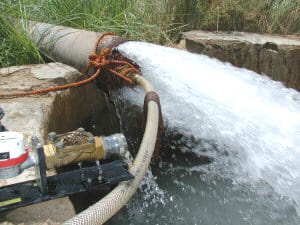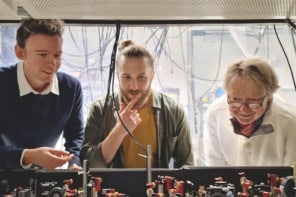A laser based magneto-optical trap that captures isotopes of krypton (Kr) gas can date samples of water and ice that are up to 1 million years old. Developed by a team of researchers in the US and dubbed Atom Trap Trace Analysis (ATTA), the table-top technique can analyze samples that are out of the reach of carbon-14 dating. Carbon-14 is effective only up to 9 half-lives or around 50 000 years (Rev. Sci. Instrum. 75 3224)

With a half-life of 230 000 years, 81Kr is a highly attractive tracer isotope to help earth scientists pinpoint key climate changes and characterize ancient aquifers. 81Kr is mainly produced when cosmic rays interact with particles in the Earth’s upper atmosphere. The radioisotope then falls to the ground where it is stored in layers of ice, oceans and shallow ground water.
To date their samples, researchers measure the capture rates of 81Kr and a control isotope, 83Kr or 85Kr. The ratio of these rates is known as the 81Kr abundance, and a comparison of sample and atmospheric 81Kr abundance reveals the sample’s age.
However, the low abundance and solubility of 81Kr in water have presented a significant challenge. Previous attempts at 81Kr dating using other methods have demanded large amounts of sample material. For example, in a groundwater study of the Great Artesian Basin, Australia, scientists had to process 16 tons of water to generate sufficient krypton gas (0.5 milliletres) for analysis.
The team has now refined its ATTA method into a very sensitive measurement technique that requires only 50 to 178 microlitres of krypton gas (equivalent to around 2 tons of groundwater). At its heart is the laser-based magneto-optical trap which selectively captures individual 81Kr atoms for 100 millisecond. Fluorescence is then induced and collected from the atoms in order to quantify the presence of the isotope.
Recently, the ATTA technique was used to determine that the water from a well in the Western Desert of Egypt has been underground for half a million years. Motivated by this success Zheng-Tian Lu at the Argonne National Lab (ANL) and colleagues are keen to use the apparatus to study ancient polar ice. “By analysing regions of trapped air in the ice we can learn a lot about the Earth’s climate,” said Lu.




